When we bring on new clients, one of the first things my team creates for them is a standard grant narrative. Even clients who’ve been in operation for several years, even clients who’ve had some success with grants in the past, I find, don’t have a standard grant narrative.
I could go on about how this is a symptom of a mentality all too common in the nonprofit sector: the mentality that there’s just no time. But I’ve written about that elsewhere, and today I’d rather get into what a standard grant narrative is, how it can help you accomplish the big goals you have for your nonprofit, and how you can get started.
So let’s jump in!
What is a standard grant narrative?
A standard grant narrative is a generalized grant proposal. It should include all of the most common sections of a grant, including mission and history, statement of need, program descriptions, budgets, and attachments.
If you have more than one program, your standard grant narrative should include program descriptions, statements of need, and program budgets for each separate program.
The idea behind this is that when you find a grant opportunity (and check that it’s a good fit, of course!), you don’t have to scramble at the last minute to write an entire grant.

Why you need a standard grant narrative
Like I mentioned, one of the top reasons you need a standard grant narrative is that it will save you time and allow you to apply for grants even if you find out about them close to the deadlines.
But that’s not the only reason. There’s another, bigger picture reason that I want to dig into for a moment.
When you create a standard grant narrative, you will need to gather information from many different departments in your organization (even if all these departments are run by you!). As you’re doing this, it’s an opportunity to take stock of what’s really working and what you need to make adjustments to.
Perhaps you find that it’s very easy to write the description of one of your programs, but the other two or three are much more difficult to describe. In this case, I recommend pausing and evaluating why that might be. Are you spending too much time on just one of your programs? Or perhaps the issue is that you don’t have the time or resources to spread over more than one program.
I find this to be the case with a lot of the small nonprofits that I work with. They have one program that they’re doing really well, but they’re also trying to solve a lot of different, related issues in their communities. And these other programs don’t get the attention they require to be truly successful and impactful.
The folks you serve deserve to be served well, and while it might feel like you’re doing everything you can to address all the most pressing needs you see, you’ll likely have more of an impact if you sustain your work in one area before expanding to others.
How to get started
As you know, I’m not just going to say “You need a standard grant narrative” and then provide no guidance on how to get started. It’s important to me that you can apply what you’re learning because the stakes are high! The work you do is important.
So I have a couple of actions you can take today.
First of all, you can download this standard grant narrative checklist. It will help you evaluate what you have already and what you need to create next.
Second, if you’re not already a member of Grant Writing Made Easy, I would love to have you in the course. GWME is designed to help students create a standard grant narrative. Enrollment is closed right now, but you can join the waitlist here.
As a bonus, when you join the GWME waitlist, you’ll get a copy of The Roadmap to Grant Funding delivered right to your inbox.
Thank you for reading today!







